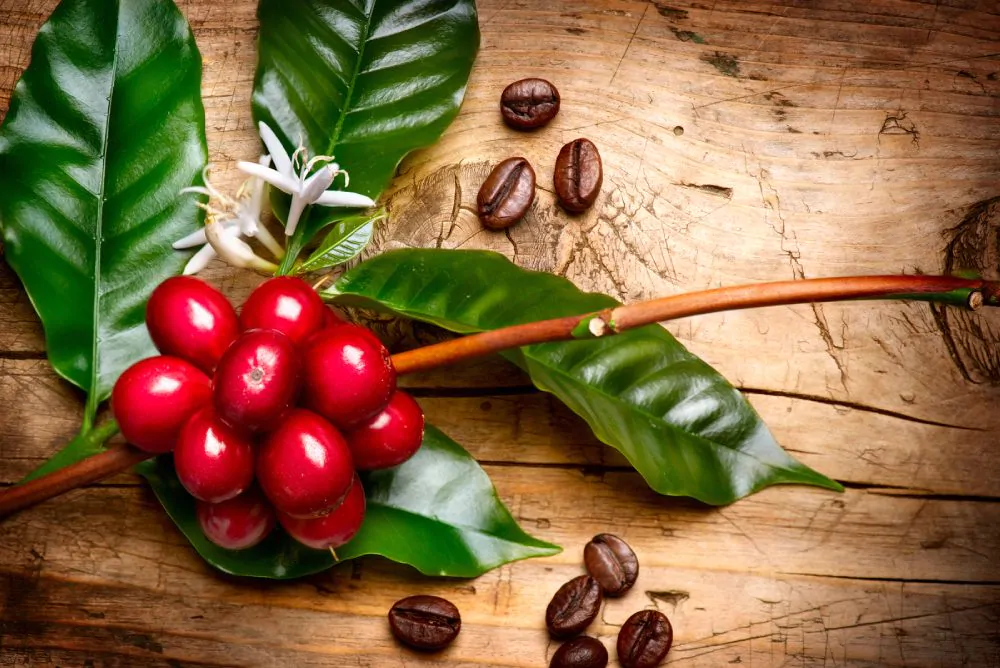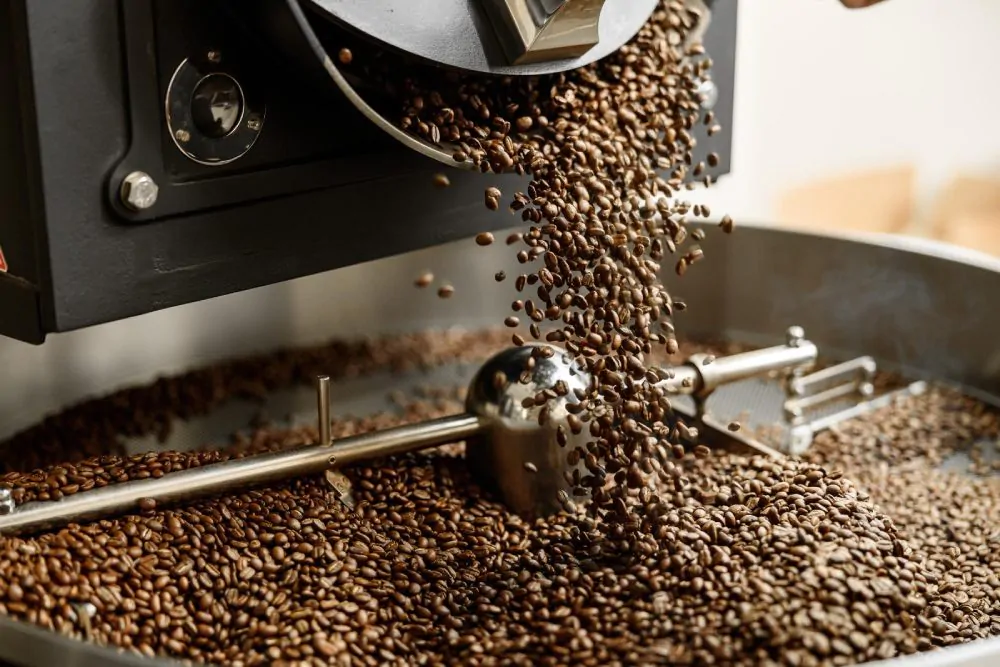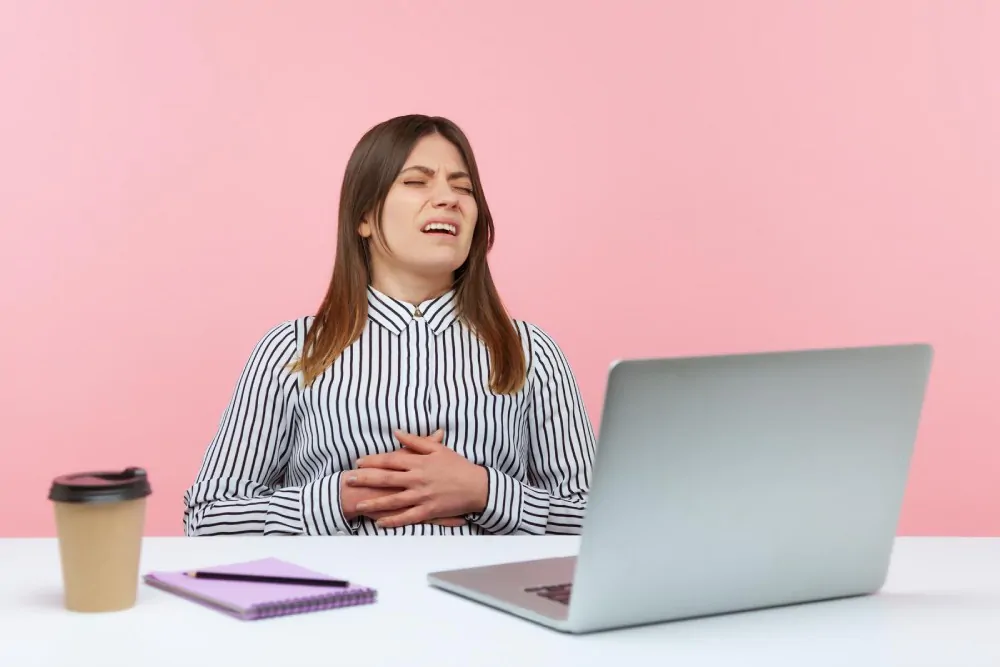Are you wondering, “what is raw coffee?” This article details its health benefits, preparation, tasting profile, and the best ways to consume it. Let’s dig in.
Raw coffee, also known as green coffee, is the purest form of coffee. It’s unroasted, unflavored, and comes in either whole beans or ground form. Since raw coffee is only picked and processed without going through the roasting process, it usually comes in a green hue when packaged and sent to customers.
One of the reasons why green coffee is more popular than ever is because it contains less caffeine than roasted coffee. Therefore, raw coffee is an option if you’re trying to steer clear of the jitters without sacrificing your holy cup of Joe to get the morning started.
The Tasting Profile Of Raw Coffee

Some argue that raw coffee is red or yellow, and they’re not exactly wrong. They are referring to the raw coffee cherries that contain the beans, which are actually seeds, prior to processing and roasting.
It’s fine to eat raw coffee beans, even though the texture can be hard to chew and consume. You can also drink raw coffee after grinding the beans, but the brewing method is not identical to your usual daily grind habit to make them palatable.
The coffee cherries are also edible, but the taste doesn’t come with the usual sweetness you’re familiar with in your daily cup of java. Therefore, I haven’t met many people who are actually into the taste of it. Some people even make tea with coffee cherries, called cascara tea.
After being extracted from the cherries, the raw coffee beans will be dried. This releases an acidic profile, which is less prominent when the beans are roasted. Check out our reasons why green coffee is a game changer to learn more.
Benefits Of Consuming Raw Coffee Beans
Raw Coffee Is Rich In Antioxidants

Raw coffee is a rich source of antioxidants, including polyphenols and hydrocinnamic acids. On top of that, raw coffee is also a source of chlorogenic acid, some of which will be released during the roasting process and will also be lost over time.
However, when the beans are roasted, grounded, and brewed shortly after being picked, the extraction process doesn’t fully inject all the potential benefits into your cup. Therefore, consuming raw coffee right after it is harvested and processed is the best way to use all the antioxidants.
Raw Coffee Is Rich In Fiber
Other than antioxidants, raw coffee also contains a great amount of fiber. Thirty beans contain about three grams of fiber, which is around 10% of the daily fiber requirement. Even though it may seem odd to include raw coffee in your daily diet, it’s great if you struggle to eat enough fiber in your diet as is.
Raw Coffee Contains Less Caffeine
As mentioned earlier, raw coffee contains less caffeine. Roasted beans provide an optimal condition for the caffeine content to be released in water.
On average, a cup of raw coffee contains somewhere between 20 to 50 mg of caffeine. Meanwhile, a regular cup of coffee has about 100 mg of caffeine.
Coffee is beloved because it can help improve memory, mental capacity, and mood. Many people rely on coffee to help them feel alert and ready for the day ahead. However, overconsumption of caffeine also leads to restlessness and shakiness, insomnia, as well as headaches, and a fast heart rate. Raw coffee is the way to go if you’re trying to cut down on caffeine consumption in your daily diet without completely eliminating it.
What Are the Downsides Of Eating Raw Coffee Beans?
Raw Coffee May Cause Heartburn

The rule of thumb is that the less the coffee is roasted, the more acidic it is. Therefore, those who tell you they are a dark roast person are actually into its bold and rich flavor with a full body and texture.
Meanwhile, light roast coffee comes with a signature acidic flavor profile. Therefore, raw coffee sitting at the end of the spectrum has the most acidity.
That being said, those experiencing acid reflux or are sensitive to acidic foods by nature should steer clear from consuming raw coffee. Other than the acidity matter, the natural caffeine content in raw coffee is also likely to relax the lower esophageal sphincter, which is the primary factor that causes the reflux of stomach acid.
Raw Coffee’s Flavor May Not Be Familiar To Some People
Raw coffee provides a much milder, lighter flavor that a regular cup of Joe cannot match. When brewed properly, raw coffee introduces a unique thickness to the texture that you barely see in regular coffee. When drinking raw coffee, it may remind you of something “grassy,” like a herbal drink or tisane.
There’s nothing wrong with the flavor of raw coffee. At the end of the day, it boils down to individual preferences. We all like coffee in different ways. Some like it black and pungent; some like to mix it up with half-and-half or condensed milk to balance out the flavor. If you haven’t tried drinking raw coffee before, give it a go to explore a new flavor.
Raw Coffee May Lead To Digestive Issues
Last but not least, consuming raw coffee raises concerns about digestion. Besides the acidity, raw coffee also contains fiber, which is a potential trigger for an upset stomach.
How To Brew And Consume Green Coffee
Nowadays, you can find raw coffee in either whole beans, ground coffee, powder, or even capsules. Since 2012, the giant in the coffee industry, Starbucks, has also developed Starbucks Refreshers™ beverages using the green coffee extract from Arabica beans as a thirst-quenching breakthrough innovation.
Other than whole beans and raw coffee grounds, some people use powdered green coffee and capsules as dietary supplements. You can mix raw coffee powder with water or spruce it up in a drink recipe with other ingredients up to your liking.
If you haven’t brewed raw coffee before, rest your worries, as it’s not too hard to brew. All you need to do is steep ground coffee in hot water for ten minutes before straining it with a fine mesh and drinking the extraction. If you’re a first-timer when it comes to green coffee, go for a medium-fine grain for the best results.
If you’re wondering what to do with raw whole beans, it takes a little more time and effort, but the process should not be too hard. First, soak the beans in water overnight. The next day, add the wet beans into a pot with water and start boiling. Once it starts to boil, reduce the heat to keep it simmering for the next fifteen minutes. Turn off the heat and let it cool.
Strain the beans and consume the leftover coffee. You can store it in the fridge for a few days or drink it immediately. Check out our round-up of the best coffee roasters to roast green coffee beans at home if you would prefer to roast your raw coffee.

